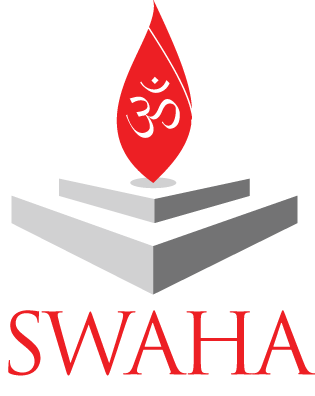The period of Adhik Maas has always occupied a regular slot on the Hindu calendar. However, within recent weeks special attention has been given to this month with specific instructions and prohibitions. Issued directives regarding Adhik Maas 2012, which begins on August 18 and ends on September 15, have been cause of widespread dismay and confusion among Hindus of our country. The advice that pooja should not be done for the duration of the entire month has created many a doubt, aroused fears and uncertainty in the minds of Hindus. Such a prohibition is indeed a cause for concern and SWAHA, as a responsible Sanatanist body, in this response, attempts to provide some enlightenment through philosophical and practical reasoning.
As the name suggests, the word “adhik” means “additional” and hence Adhik Maas is an additional month included on the Hindu calendar, which is calculated according to the lunar cycle. This month is added to the calendar every two years or more, so as to include the minute or very brief periods that are sometimes timed into the lunar year. What then is the relationship between this inclusion and performing pooja?
At the outset one should consider the importance of this mode of worship in the life of a Hindu. Prescribed by the scriptures, it is one of the many practices of Sanatan Dharma which guides man towards self-realisation. A brief look at the word “pooja” will give an insight into the purpose of this age-old ritual that has been performed since time immemorial.
“Pooja” is comprised of two syllables “pa” and “ja”. The first syllable, pa, stands for “paap-naashan” – the exhaustion of the results of undivine or sinful actions, commonly known as “paap”. “Ja” stands for “janma-vichheda” – the cessation of the cycle of birth and death, the state of which is generally known as “moksha” or liberation. Clearly, such a state is to be sought unceasingly and the auspicious act of performing pooja facilitates the process.
Additionally, research has shown that whenever Adhik Maas falls in the month of Bhaadon (August-September), as is the case this year, that period of time holds added auspiciousness, especially for poojas. Then, should we not grasp every opportunity to perform those actions that provide added blessings to our lives?
Moreover, a most pertinent question that must be asked is who benefits the most when pooja ceases? None other than the demons! It is only in the absence of prayer that spirituality degenerates and a careless lifestyle prevails. Under such conditions evil is allowed to thrive. The insurmountable increases in diseases, environmental and natural disasters that have been recorded in our scriptures and even today speak of a doctrine that is bereft of the performance of pooja. Scriptures are replete with examples of the gross degeneration of the human condition that resulted from a decrease or non- performance of this powerful and time-honoured practice of pooja. One common example scripted in Devi Bhagavat Puraan describes the reign of terror and adharma of the demon Durgam and the subsequent poverty which engulfed the land. The only solution to such impoverished conditions, pain and suffering was that recommended by the Divine Mother. What else but intense worship! What else besides the ultra-remedy that burns away all sin? What else but pooja! Today, with a resurgence of such indigence, we need to choose the path that leads to our spiritual affluence and that of our fellow-man.
SWAHA advises all Hindus to continue their poojas as usual, even during the auspicious Adhik Maas period. As responsible Hindus, we need to be vigilant and exercise our power of “vivek” – discrimination. Make the right choice! Act sensibly! Be guided by the traditions of our forefathers who carried out this religious practice in and out of the month of Adhik Maas! Be guided by the injunctions as prescribed by Sanatan Dharma.

naresh
Om, kindly advise on Author of the Adhik Maas writing. I am in full support.
jetendra Sharma
In doubt whether to perform Shri Sat Narayan Vart Pooja.